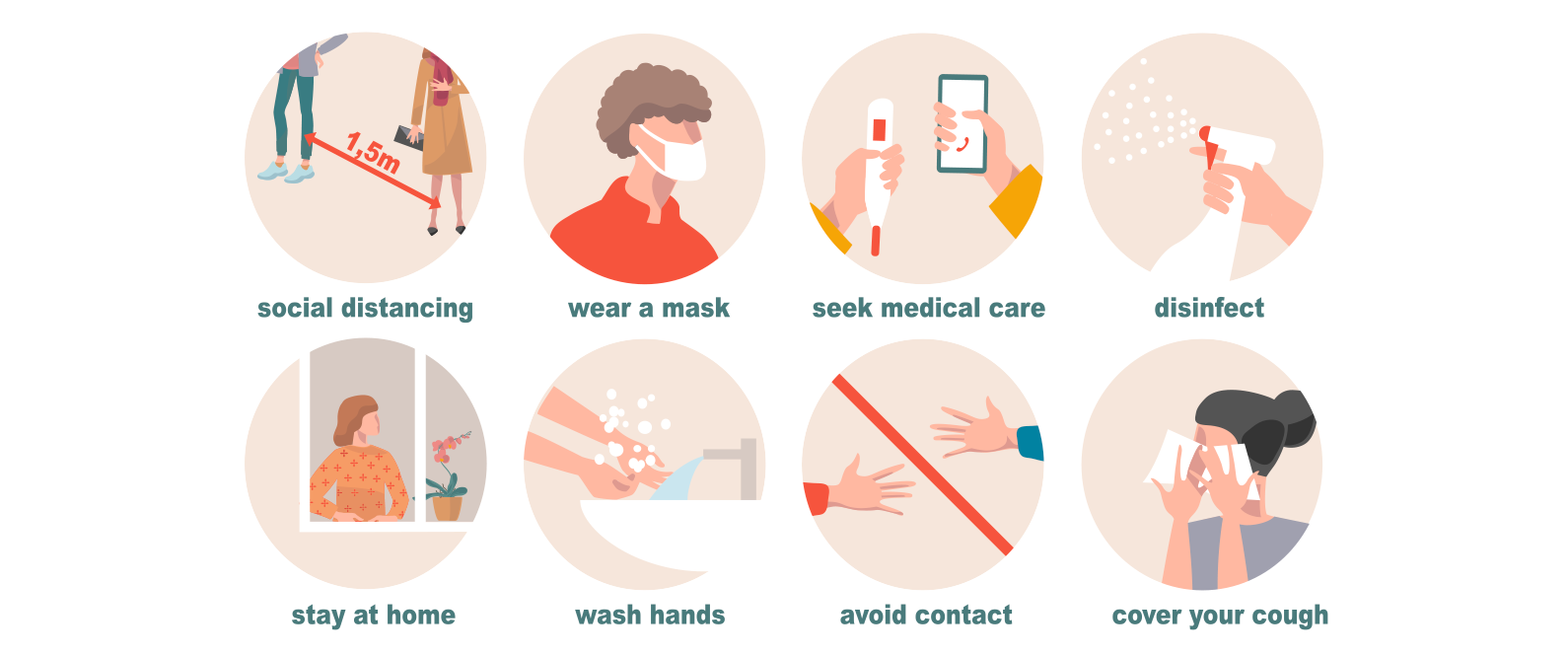Facemasks and COVID-19
 It is important that individuals continue to observe guidance on the wearing of facemasks
It is important that individuals continue to observe guidance on the wearing of facemasks
During the COVID-19 pandemic, facemask use has become emblematic of social responsibility, but it must be remembered that they also have an important technical role to play as part of a holistic preventive approach to infection. Facemask use, in conjunction with other measures, helps to reduce the likelihood of human-to-human transmission of respiratory infections, including COVID-19. These other preventive measures include physical distancing and intensive hand hygiene based on frequent and thorough handwashing with soap and water or with hand sanitizer that contains at least 60% alcohol.
It is important that individuals continue to observe guidance on the wearing of facemasks - but when and how should they be deployed for maximum effectiveness? (This guidance is for the general public and is NOT intended for healthcare workers or staff in healthcare settings).
Facemasks must be worn:
- Inside offices, stores, restaurants, schools, gyms, public shopping malls or while using public transportation.
- Using any kind of transport if occupied by more than one person (with some exceptions for members of the same household).
- In crowded spaces, gatherings and during social visits.
- Walking or exercising outdoors/indoors, if you are in close proximity to other people (less than 2m distance).
- If you feel sick (if you have symptoms of an upper respiratory tract infection like fever, coughing, runny nose, sore throat, clogged sinuses, or repeated sneezing).
- If you belong to the high-risk group of people (suffering from a chronic disease like diabetes, obesity, heart disease, etc.; 55 years or older; pregnant or breastfeeding mother) and have to go out for a necessity.
- To protect your infant if you are breastfeeding and have symptoms of an upper respiratory tract infection.
- If you are a caregiver or sharing living space with a person/s who has symptoms suggestive of respiratory tract infection or is suspected to have COVID-19.
- If you are the caregiver or sharing the same living space with someone who has a chronic condition that puts them at risk of severe COVID-19 infection.
Types of facemasks
Two types of facemasks are generally available for use by the general public:

A medical facemask is a disposable facemask that protects the wearer’s nose and mouth from contact with droplets, splashes and sprays that may contain microbes.

A cloth facemask/covering is easy to find or handmake and can be washed and reused. However, laboratory studies have shown that medical facemasks are more effective in preventing respiratory infection than cloth facemasks/coverings. If there is no shortage of medical facemask availability, these should be used by the general public.
How to wear a facemask?
Clinical trials have demonstrated that in order to be effective, medical facemasks should be worn properly and consistently. A properly worn facemask must cover the mouth and the nose.

How to correctly dispose of facemasks?
- While removing the facemask, do not touch the front but remove the lace from behind.
- After facemask removal or after inadvertently touching a used facemask, clean hands by washing them with soap and water and/or by using an alcohol-based hand sanitizer.
- Single-use masks (after removal) should be promptly disposed of in a closed bin and not re-used.
- Facemask should be disposed of if it becomes damp.
How do I dispose of a facemask in an environmentally friendly manner?
Disposable facemasks are non-biodegradable. Hence, organizations such as the World Wildlife Fund (WWF) have flagged the negative short-term environmental impact of improper discarding of disposable facemasks by the public. The only way to ensure to dispose of a facemask correctly is by throwing it in the bin. It is critical for environmental safety that disposable facemasks do not escape into nature and end up in rivers and oceans.
What are some precautions for facemask use?
- Facemask use is not a substitute for physical distancing or hand hygiene.
- Facemasks should not be used by anyone who has trouble breathing or is unconscious or otherwise unable to remove the mask without help.
- Children under 2 years of age should not wear a facemask.
Source: Ministry of Public Health, Qatar | Mayo Clinic | Johns Hopkins Medicine | World Health Organization | The Independent | International Journal of Infectious Diseases
Contributors: Dr. Karima Chaabna, Dr. Sohaila Cheema and Dr. Sathyanarayanan Doraiswamy
Editing: Mr. John Hayward